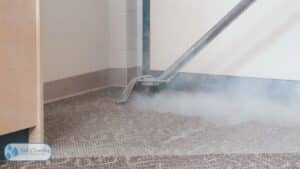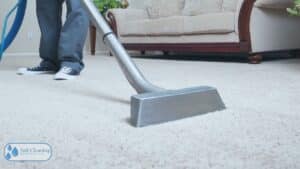Introduction to Disinfectants
In today’s world, disinfectants play a crucial role in maintaining cleanliness and preventing the spread of harmful bacteria and viruses. With infectious diseases like COVID-19 posing major public health threats, there is an increased focus on proper disinfection practices, especially in high-risk settings like healthcare facilities.
To effectively combat pathogens, it’s important to understand how disinfectants work at the molecular level. Disinfectants contain active chemical ingredients that can damage or disrupt critical proteins and structures in bacterial and viral cells. This disruption causes the cells to die or become unable to reproduce and spread.
However, not all disinfectants are equally effective against all types of germs. Choosing the right disinfectant for the job is essential. Factors like contact time, concentration, and whether a surface has been pre-cleaned can impact how well a disinfectant works. Improper use can lead to surfaces that still harbour dangerous microbes.
By exploring the science behind disinfection, people can make informed choices to optimise cleaning practices. With a better grasp on how disinfectants combat bacteria and viruses, individuals and organisations can help protect public health.
The Science Behind Disinfectants
Disinfectants work by damaging the outer layers of bacterial cells, causing them to rupture and die. This occurs through chemical reactions between the active ingredients in disinfectants and components of the bacterial cell wall and membrane. Some key points on the molecular mechanisms involved:
- Disinfectants like alcohols and chlorhexidine disrupt cell membranes by dissolving lipids and disrupting protein structure.
- Oxidising agents like bleach react with proteins and enzymes, destroying their activity and ability to sustain life.
- Metals like silver release ions that bind to and disrupt bacterial cell membranes.
Bacteria can develop resistance to disinfectants through mutations that change cell wall structure and composition. For example, some bacteria have modified membranes that are more resistant to disinfectants that expel disinfectants from the cell.
Proper cleaning with water and detergent is crucial before disinfection. Organic matter like dirt, grease, and proteins can chemically react with and inactivate disinfectants if not removed first.
Explain how disinfectants cause damage to proteins within the outer layers of bacterial cells, leading to cell death.
Disinfectants like alcohols, chlorine, and quaternary ammonium compounds (QACs) penetrate and disrupt bacterial cell membranes. This damages membrane proteins that are essential for nutrient transport, membrane stability, and other vital functions.
Other disinfectants like aldehydes and phenols enter cells and react with proteins inside the cytoplasm. They denature proteins by disrupting hydrogen bonds, hydrophobic interactions, and ionic interactions that determine protein structure and function.
Vital cytoplasmic proteins like enzymes get damaged and deactivated, disrupting metabolic pathways. Structural and motor proteins also get disabled, compromising cell architecture and mobility.
With critical proteins damaged, bacterial cells lose homeostasis and the ability to sustain life, eventually leading to lysis and death.
Discuss the molecular basis of bacterial disinfectant resistance.
Bacteria have evolved various mechanisms to resist the action of disinfectants:
- Altered cell membranes – Changes in lipid composition, charge, permeability that prevent disinfectant entry.
- Efflux pumps – Transporters that pump disinfectants out of cells before they can act.
- Enzymatic degradation – Enzymes that break down and inactivate certain disinfectants.
- Biofilm formation – Extracellular matrix protects embedded cells from disinfectants.
These mechanisms are enabled by genetic mutations selected for by repeated disinfectant exposure. Understanding these molecular factors of disinfectant resistance helps optimise disinfectant use and design new disinfectants.
Highlight the role of soiled surface cleaning with water and detergent prior to disinfection.
Thorough cleaning to remove organic soil is a critical first step before disinfection. Soils like blood, grease, and dirt can chemically interact with and inactivate many disinfectants.
For example, proteins in soil can bind and sequester disinfectants like quaternary ammonium compounds before they reach bacterial cells. Oils can coat surfaces and block disinfectant contact.
Detergents help lift and dissolve organic soils and microbes from surfaces through surfactant and chelating actions. Washing with clean water flushes them away, allowing disinfectants full access to surfaces for maximum efficacy.
Following proper cleaning protocols ensures disinfectants work optimally to kill pathogens rather than getting wasted on soil binding and inactivation.
Types of Disinfectants and Their Effectiveness
With the rise of dangerous pathogens like COVID-19, selecting the right disinfectant is crucial. Not all disinfectants are created equal when it comes to killing different types of germs. Here’s an overview of some common categories of disinfectants used today:
Alcohols
Alcohol-based disinfectants typically contain either ethyl alcohol or isopropyl alcohol as the main active ingredient. Both are very effective at killing a wide range of bacteria, fungi, and viruses when used at the right concentrations. Alcohols evaporate quickly, making them ideal for disinfecting small surfaces. However, they lack residual activity once dried.
Chlorine
Bleach and other chlorine products are powerful, broad-spectrum disinfectants effective against bacteria, viruses, and fungi. Hypochlorite, the active ingredient, damages proteins in cell walls. A major advantage of chlorine is its low cost. However, it can be corrosive and irritating.
Quaternary Ammonium Compounds
Quats or QACs, as they are often called, are surfactant molecules that disrupt cell membranes. They are less effective than alcohols and chlorine against non-enveloped viruses like norovirus. But quats have residual activity and are non-corrosive. They are more suitable for disinfecting medical equipment that may be damaged by other chemicals.
Hydrogen Peroxide
Hydrogen peroxide works by producing destructive hydroxyl free radicals that damage cell components. It is effective against a broad range of microbes, including bacteria, yeasts, viruses, and bacterial spores. However, surfaces must remain wet for at least 10 minutes. It is safer for users than chlorine but can be more expensive.
With many options available, facilities should consider surface compatibility, safety, cost, contact time, and microbicidal spectrum when selecting the right disinfectants to meet their needs.
How Disinfectants Combat Bacteria and Viruses
Disinfectants work by damaging the structures within bacterial and viral cells, rendering them unable to function and replicate. The exact mechanisms depend on the type of disinfectant used.
Damaging Bacterial Cell Walls and Membranes
Many disinfectants like alcohols and chlorine compounds can disrupt bacterial cell walls and membranes. Alcohols like ethanol and isopropanol dissolve lipids in the cell membrane, causing them to lose structural integrity. This allows cell contents to leak out, leading to cell death. Chlorine compounds like sodium hypochlorite oxidise proteins and lipids, disrupting membrane function.
Denaturing Essential Bacterial Proteins
Disinfectants like aldehydes (formaldehyde) and phenols (lysol) react with and alter bacterial proteins. By denaturing proteins, they disrupt enzyme function and protein synthesis, halting bacterial metabolism. This prevents bacteria from carrying out vital cellular processes needed for survival and replication.
Difficulties Targeting Viruses
Viruses present unique challenges for disinfectants. Having only a protein coat and genetic material, viruses lack complex structures to target. However, disinfectants like sodium hypochlorite can damage viral protein capsids, rendering viruses non-infectious. Using sufficient concentration and contact time is key for efficacy against viruses.
Importance of Proper Disinfectant Use
To ensure disinfectants work effectively against both bacteria and viruses, proper usage guidelines must be followed. This includes pre-cleaning surfaces, using an EPA-registered disinfectant, following label instructions for concentration and contact time, and allowing proper ventilation during and after use.
By understanding how disinfectants combat pathogens on a molecular level, we can optimise their use to maintain clean and sanitary conditions. Proper disinfection practices are vital for infection control in healthcare settings and beyond.
Conclusion
In this blog post, we explored the fascinating world of disinfectants and how they work to combat bacteria and viruses. Proper disinfection is critical for maintaining cleanliness and preventing the spread of pathogens, especially in healthcare settings.
We discussed the science behind disinfectants, including how they damage proteins and membranes in bacterial cells. Different types of disinfectants have their own advantages and limitations that must be considered when selecting the appropriate product. Alcohols, bleaches, and other chemicals each have unique mechanisms of action against microbes.
Importantly, disinfectants must be used correctly to achieve their maximum efficacy. Factors like concentration, contact time, and cleaning of soiled surfaces all impact how well disinfectants work. Viruses in particular pose challenges due to their structure, but can still be inactivated by disinfectants when used properly.
As this blog has shown, disinfectants play a crucial role in infection control. However, it is also vital to stay up-to-date on the latest disinfection guidelines and techniques as they continue to evolve. New disinfectant products and improved testing methods are being developed all the time.
Key Takeaways
- Disinfectants damage proteins and membranes in bacterial cells through various mechanisms of action.
- Factors like concentration, contact time, and surface cleaning impact disinfectant efficacy.
- Viruses pose unique challenges but can still be combated by disinfectants.
- Staying informed on the latest disinfection developments is important.




